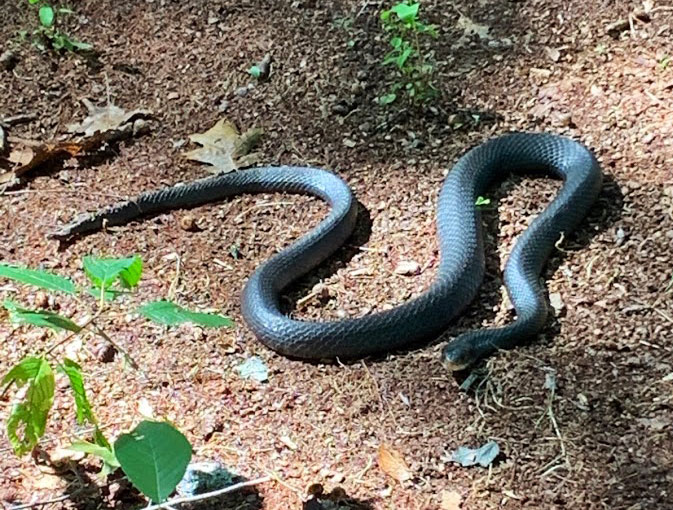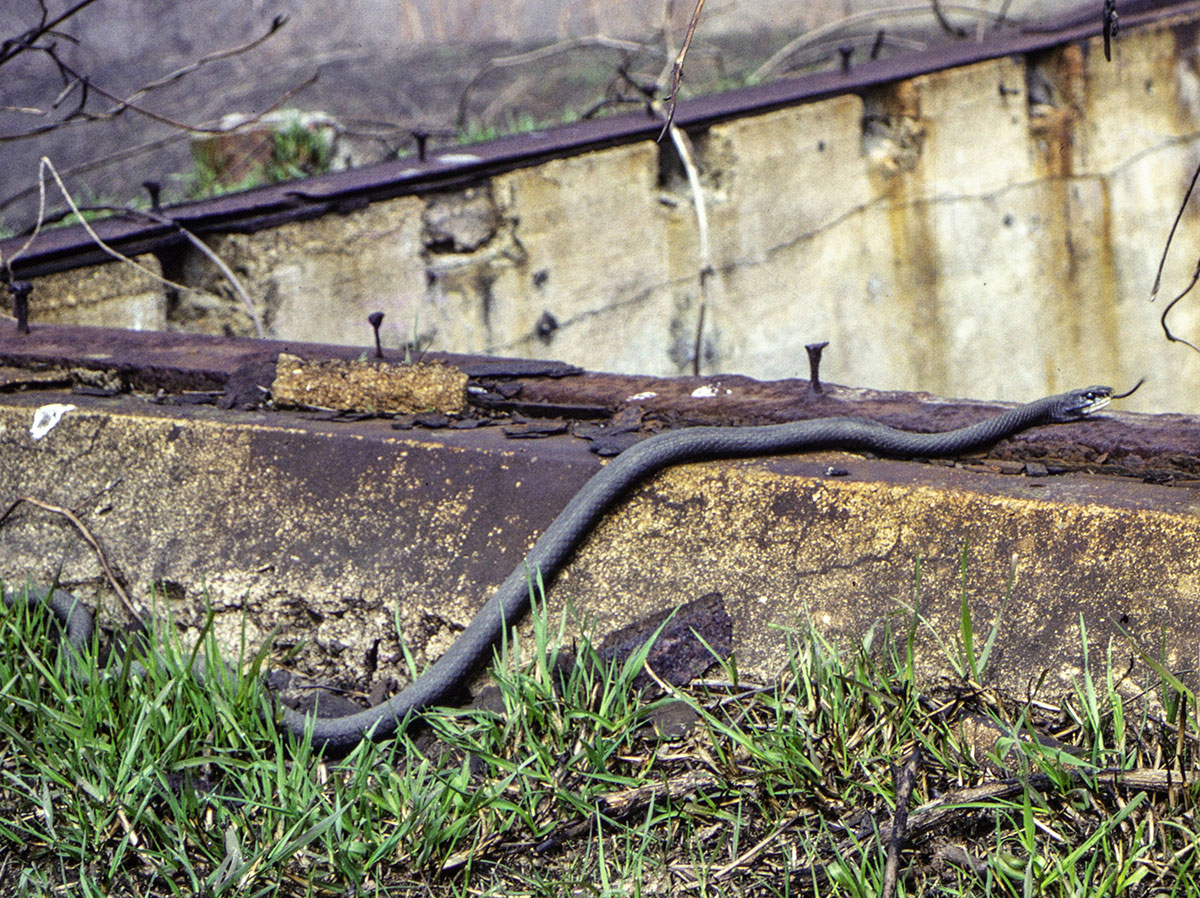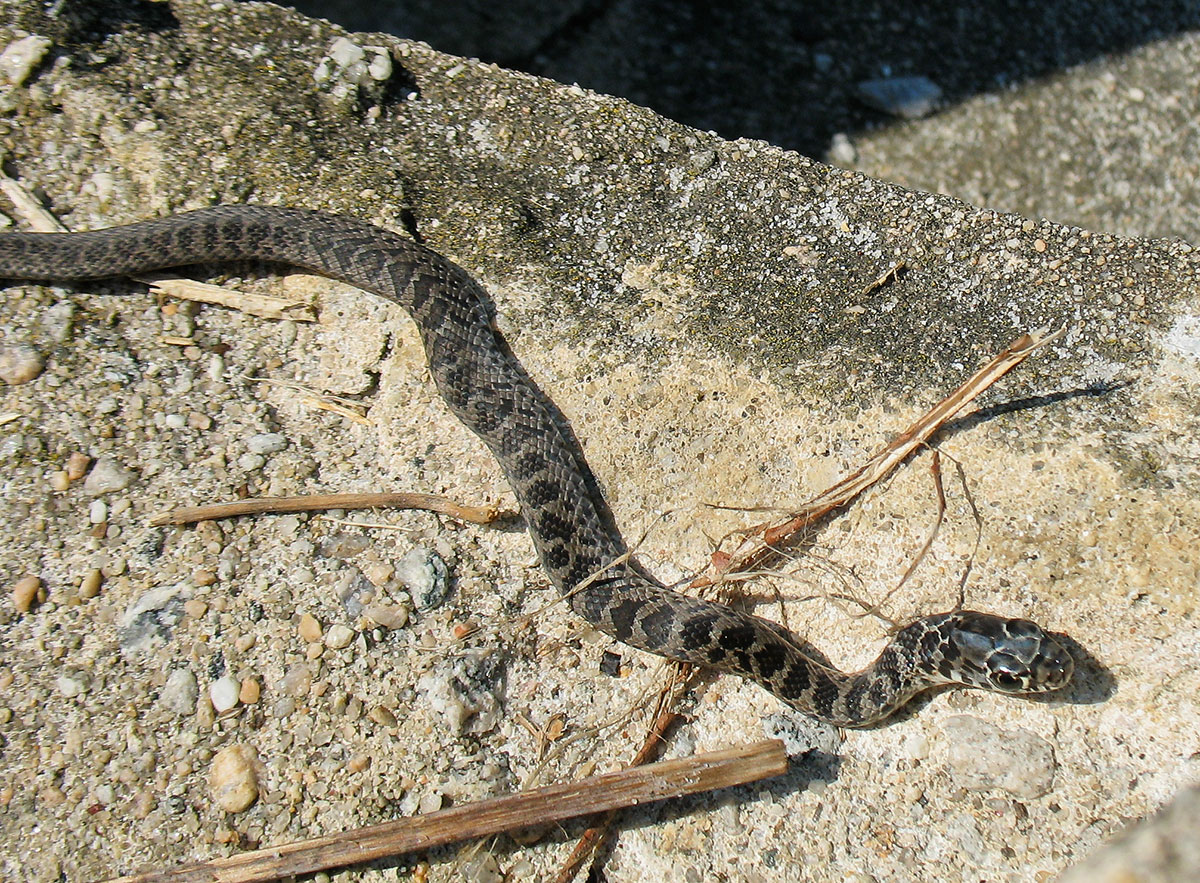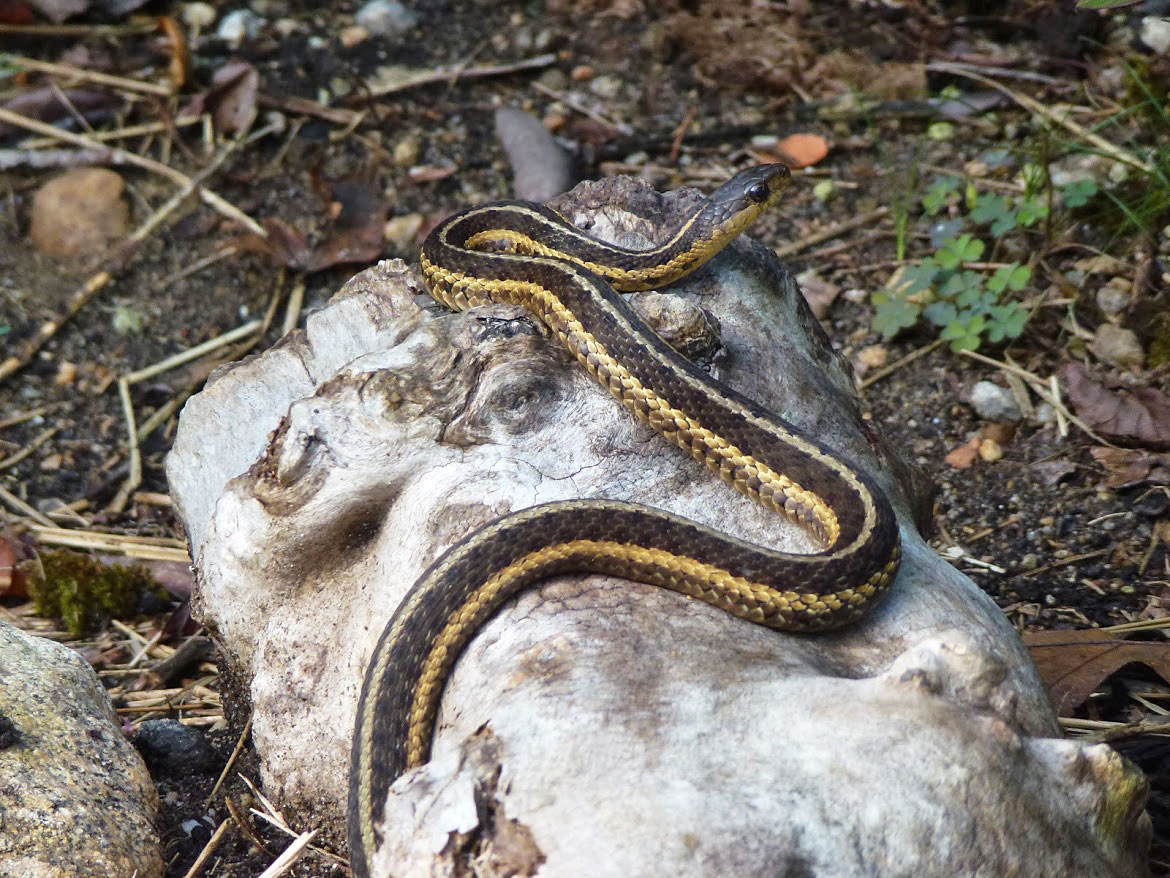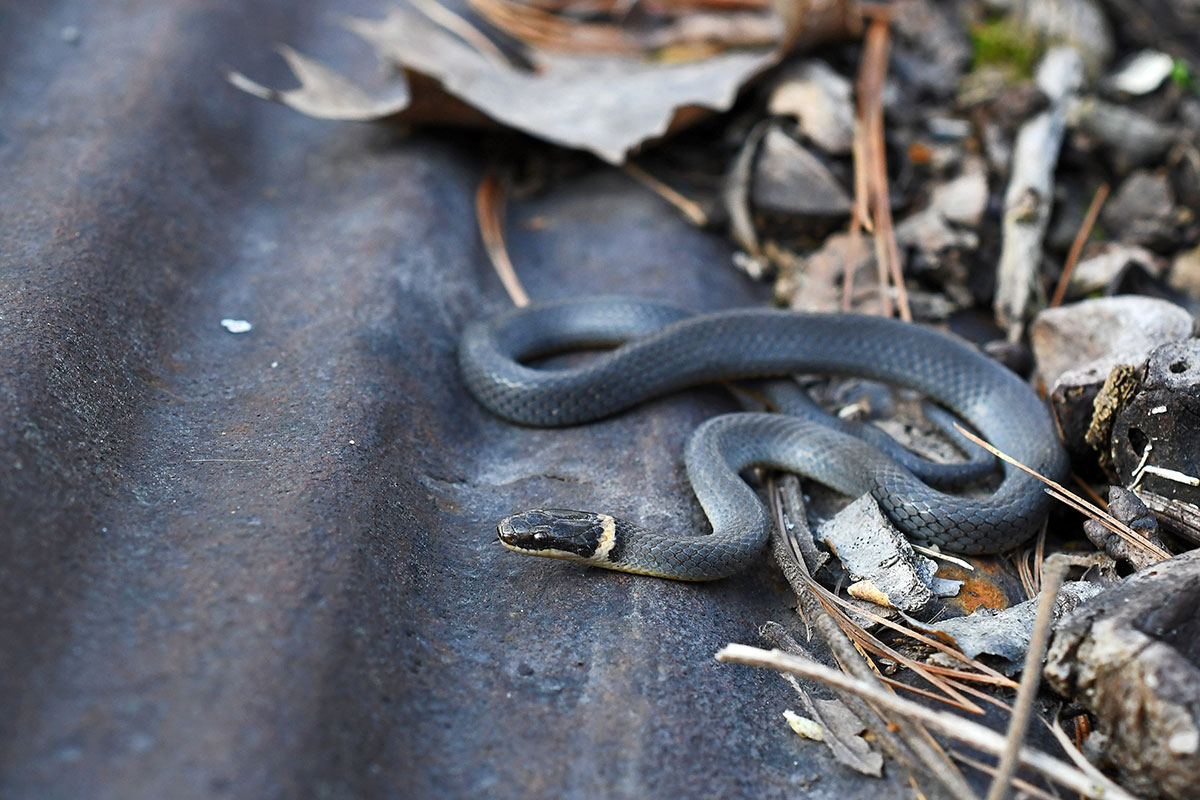ANNUAL EXHIBITION 2021
SNAKES
North American Black Racer (Coluber c. constrictor) along the Brickyard Trail
Photograph by Terry McNamara
Adult Black Racer snakes are a solid satiny black with a tan-yellow, whitish snout. Diurnal daytime hunters, their widely varied diet consists primarily of small mammals, frogs, and salamanders, as well as snakes and snake eggs, turtles and turtle eggs, and birds and bird eggs.
As their name indicates, Black Racers are known for their rapid movement.
North American Black Racer atop Battery Marcy gun emplacement, Parade Grounds
Photograph by Jacki Williamson
On average three to four feet long, Black Racers have reached record lengths of six feet. Those that survive interaction with humans (primarily death by automobile) and varied animal predators (large birds, feral cats, dogs and coyotes) can live to an age of about ten years in the wild.
Although fiercely protective if cornered, especially near its breeding grounds, the Black Racer is not venomous. In fact, no poisonous snakes of danger to humans inhabit Fishers Island.
Juvenile North American Black Racer
Photograph by Mary P. Murphy
Young Black Racers do not resemble their almost totally black parents: “Rather than having a solid, unmarked body, young racers are boldly patterned with a middorsal row of dark grey, brown, or reddish brown blotches or saddles, on a ground color of gray or bluish gray.” Quote from “Snakes of New England” by Linda Krulikowski.
Eastern Garter Snake (Thamnophis sirtalis)
Photograph by Terry McNamara
The snake you’re most likely to encounter when you are out walking on Fishers Island is the Eastern Garter Snake. Their sedentary behavior makes these snakes easy to detect and observe.
Garter snakes are medium sized and fairly heavy bodied. Their pattern consists of a medial stripe and two lateral stripes—all yellow—on a background that varies from dark green to olive brown to black. They are usually around 20 inches in length, though lengths of more than four feet have been recorded.
Eastern Garter Snake on lily pad, the Peninsula
Photograph by Terry McNamara
Eastern Garter snakes are present in every habitat on Fishers. They feed on frogs, worms, salamanders and insects. They, in turn, have many predators, including the Northern Black Racer. Garter snakes are also hunted by cats, dogs, coyotes, owls, hawks, and raccoons, and are often killed by automobiles.
Eastern Ribbon Snake (Thamnophis sauritus)
Photograph by Linda Musser
The Eastern Ribbon Snake is a slender, medium-sized snake with three well-defined yellow stripes on a dark brown to black body. It is found in a variety of habitats but always in proximity to shallow water.
This snake closely resembles and is often confused with the Eastern Garter Snake. There are various makings around the supralabials (the first row of scales above the mouth) that will confirm identification (best to use a field guide), but some simpler distinctions are that the Ribbon Snake is much slimmer, has a longer tail, and more defined or “neater” markings than the Eastern Garter.
Northern Ring-necked Snake (Diadophis punctatus edwardsi)
Photograph by USFWS
The final member of our exclusive Fishers Island serpentine group is the Northern Ring-necked Snake. This handsome 10 to 14 inch snake is smooth scaled with a slate gray or blue gray body. It has a black head, a yellow, golden or orange neck ring, and a yellowish underside. Your chances of observing this creature while walking the trails are slim because, although they are common, they are very secretive.

